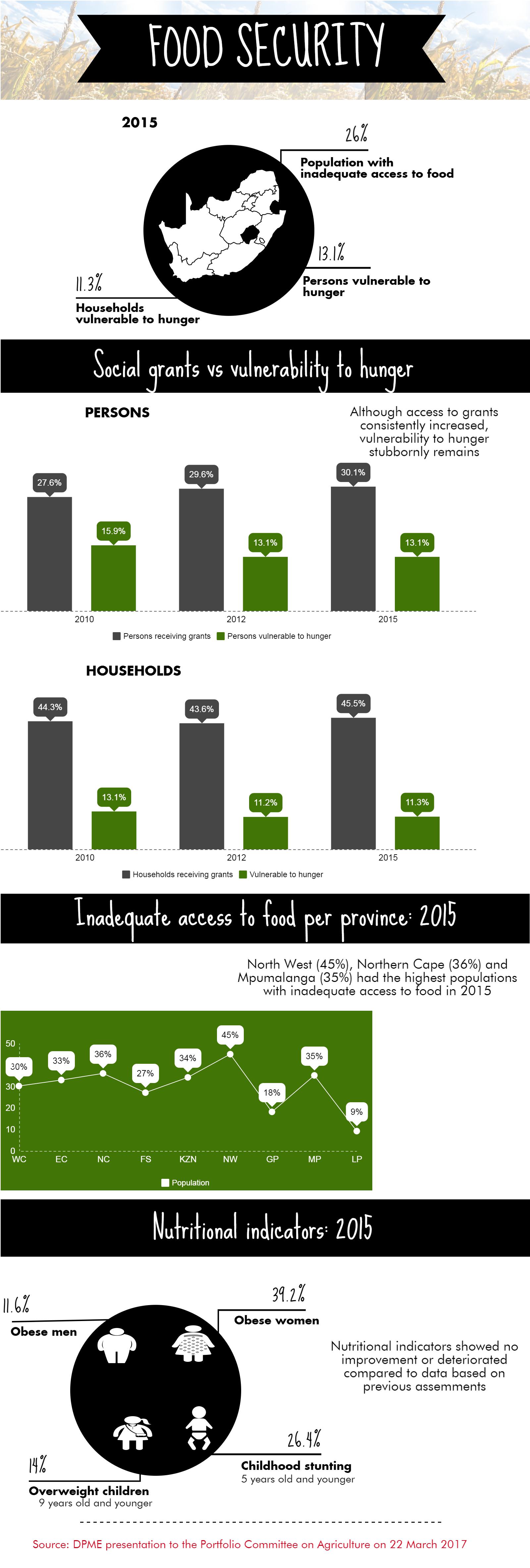The Department of Planning, Monitoring and Evaluation (DPME) made a presentation to the Portfolio Committee on Agriculture on the progress in implementation of the 2017-2022 National Food and Nutrition Security Plan in South Africa. They provided data on people at risk, government interventions, stakeholders as well.
The right to food is entrenched as a constitutional mandate. The National Development Plan (NDP) identifies food security as both a consequence and a cause of poverty and inequality. The presentation examined the relationship between access to social grants and vulnerability to hunger and it showed that although access to grants increased, vulnerability to hunger stubbornly remains. The population of social grant recipients increased from 28.7% in 2011 to 30.1% in 2015 while the section of the population vulnerable to hunger remained at around 13%. The report identified that 26% of children 5 years and younger are stunted. Childhood stunting is an important indicator of the prevalence of malnutrition.
Other interesting facts on food security:
-
13% of South Africans are vulnerable to hunger while 26% of the population have inadequate access to food
-
North West (45%), Northern Cape (36%) and Mpumalanga (35%) had the highest population with inadequate access to food in 2015
-
39.2% of women aged 15 years and older are obese
-
14% of children aged 9 years and younger are overweight
See infographic for more:



Comments
Keep comments free of racism, sexism, homophobia and abusive language. People's Assembly reserves the right to delete and edit comments
(For newest comments first please choose 'Newest' from the 'Sort by' dropdown below.)